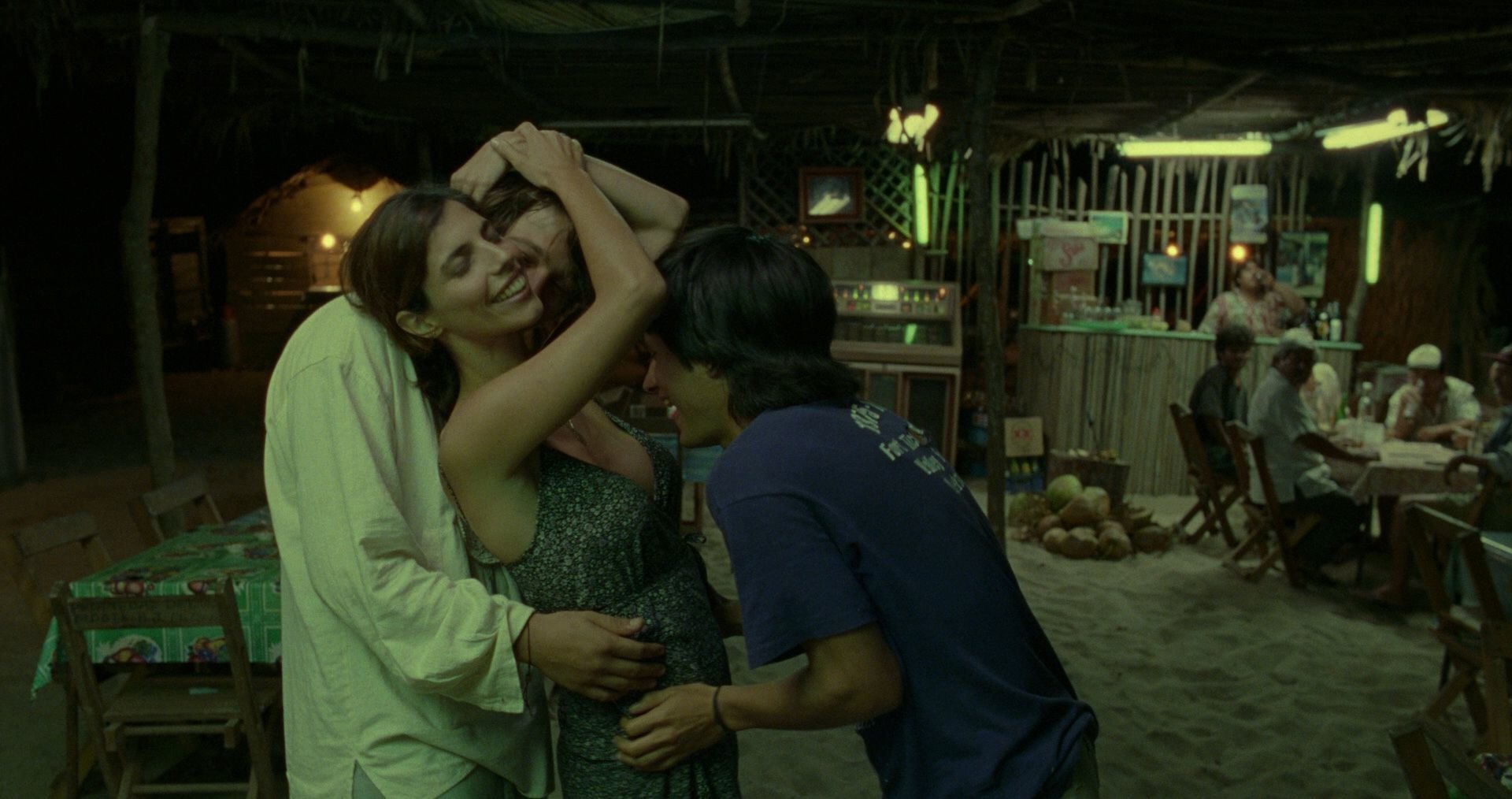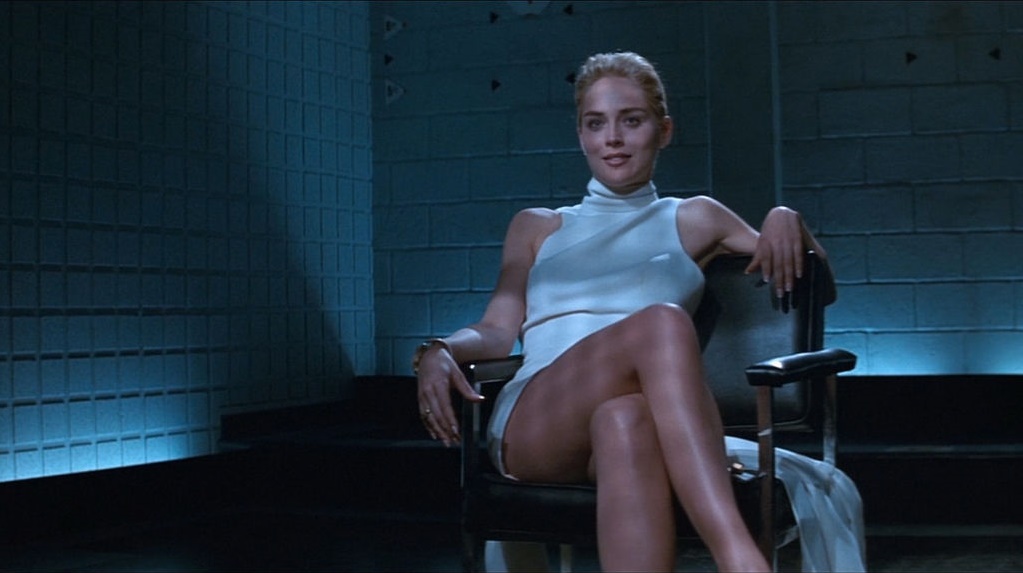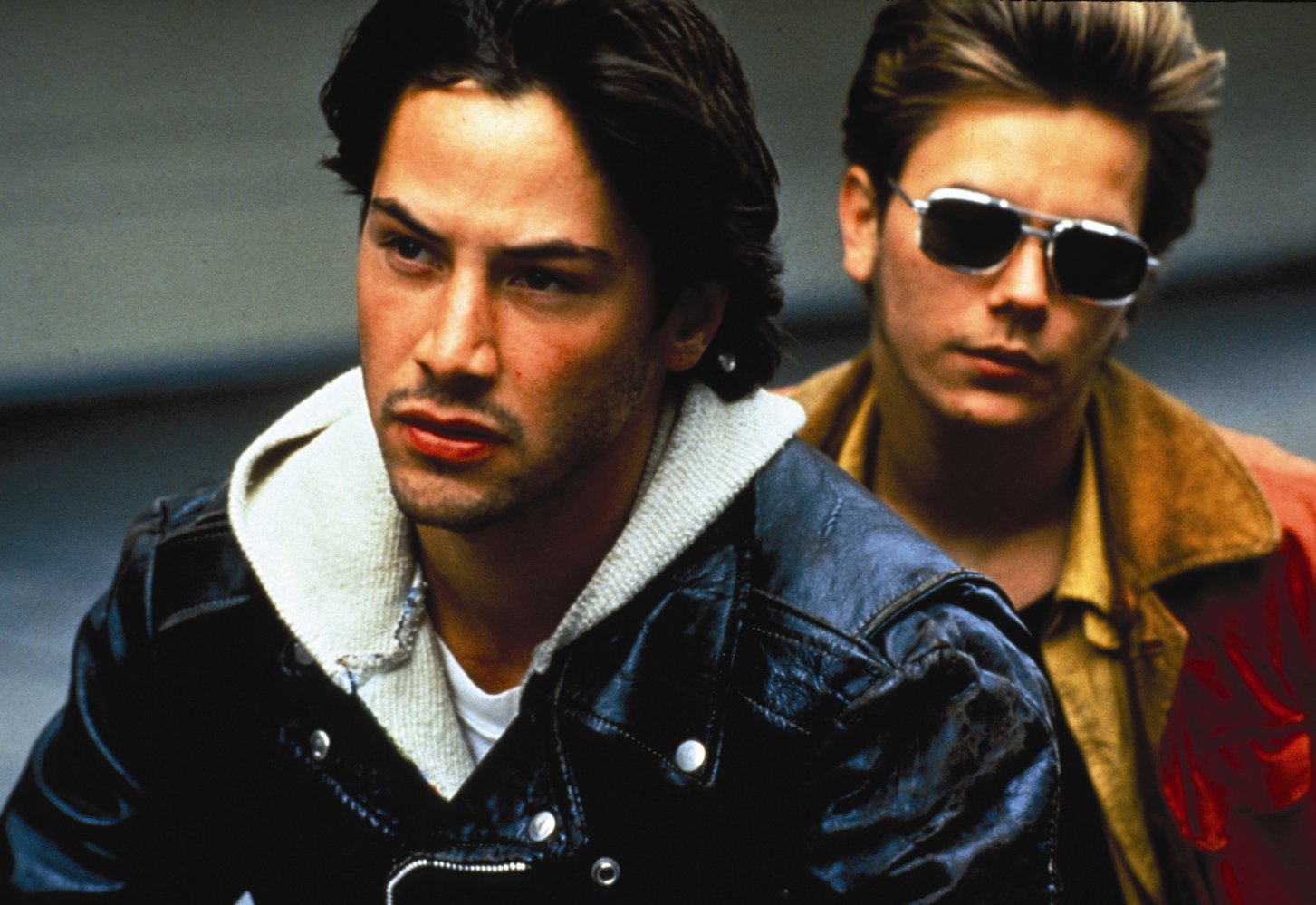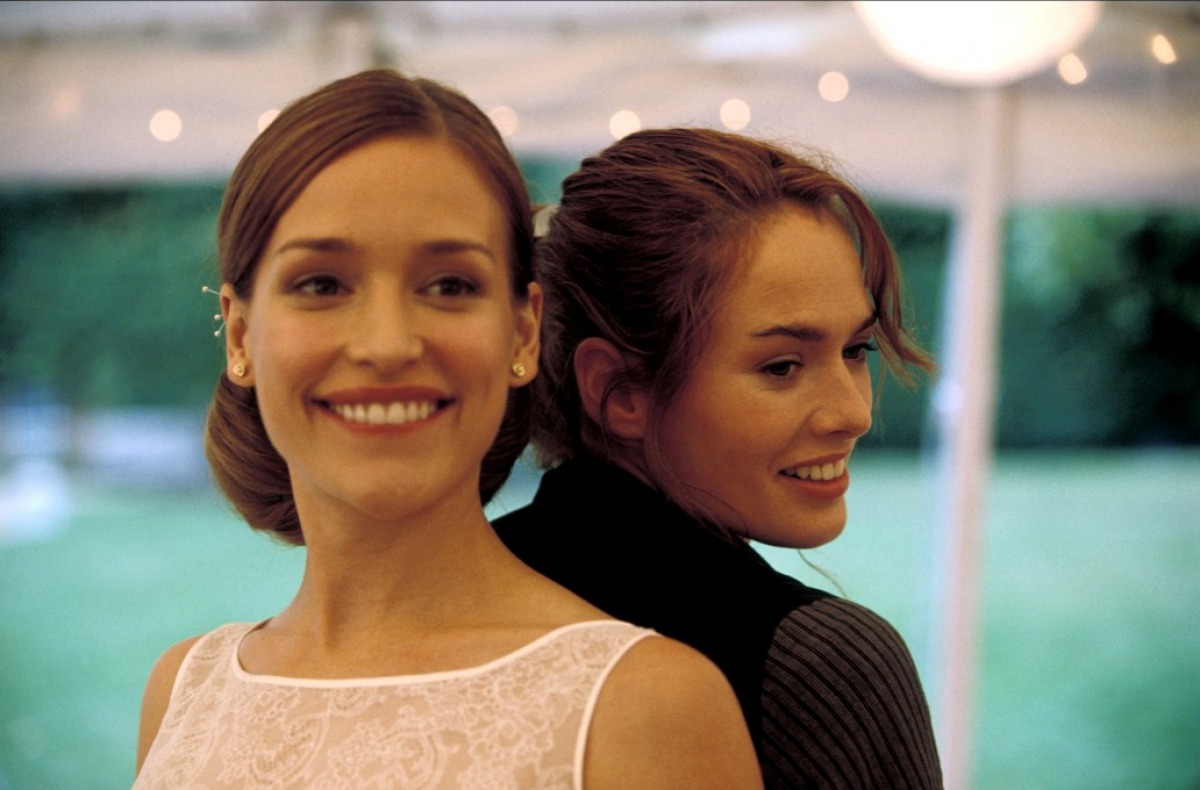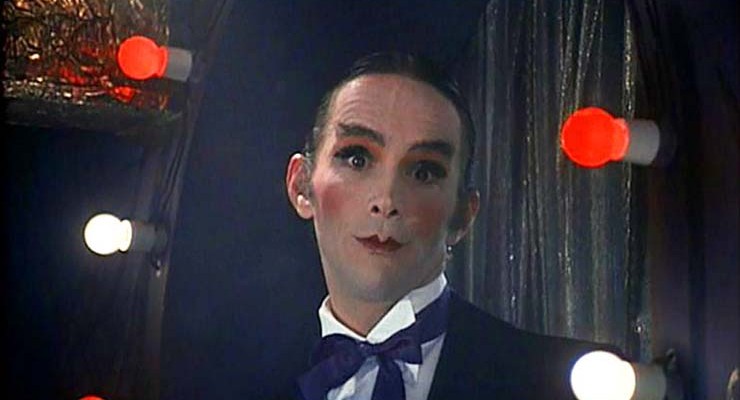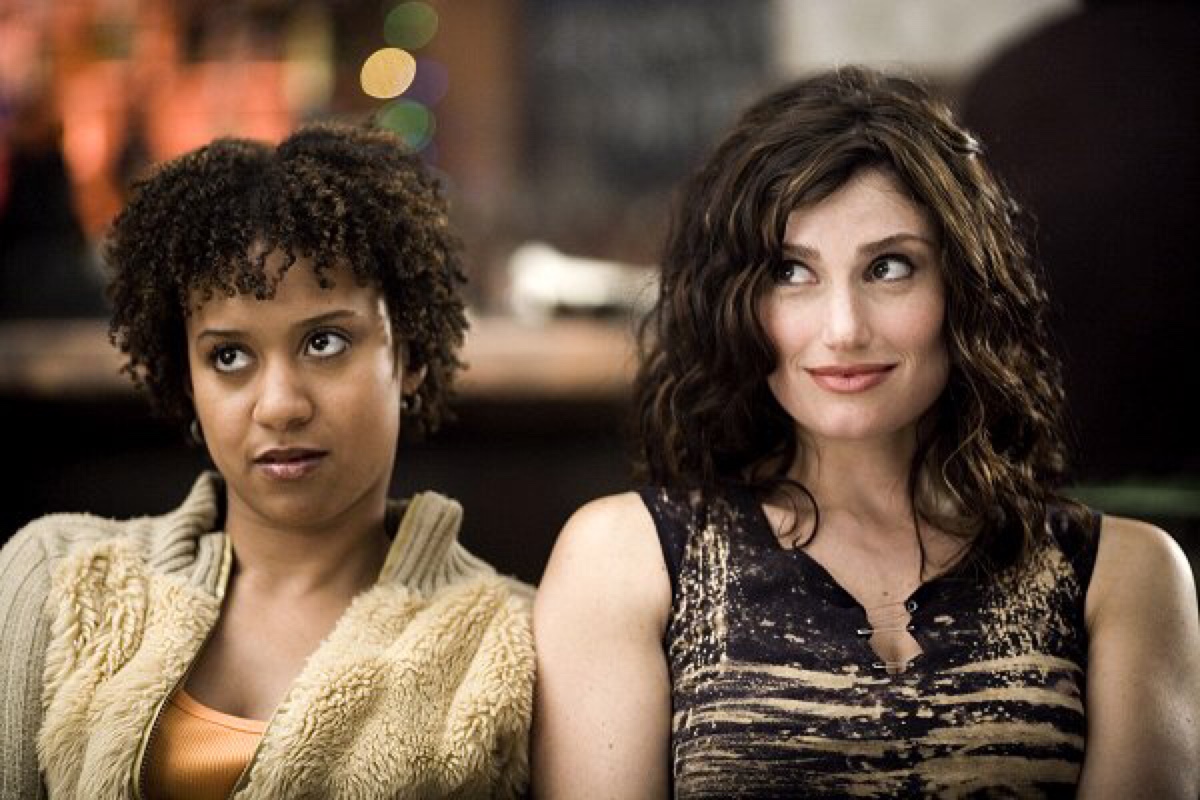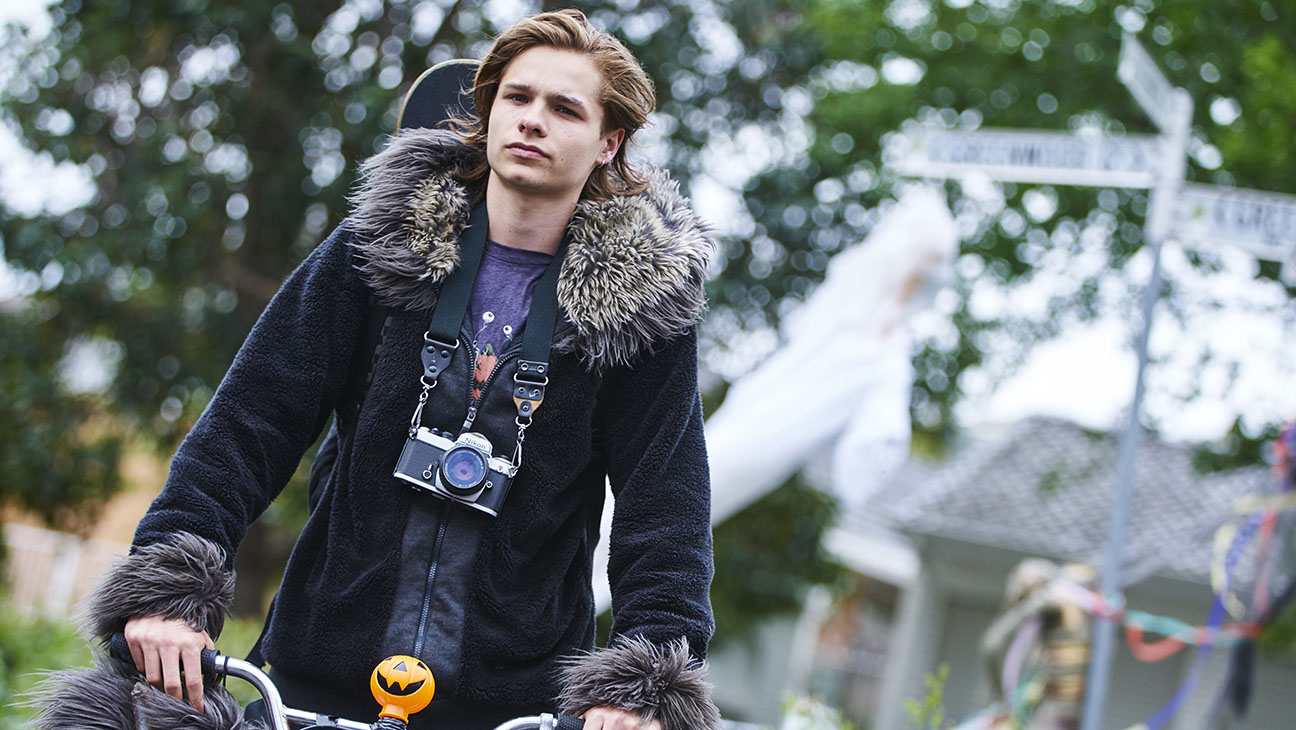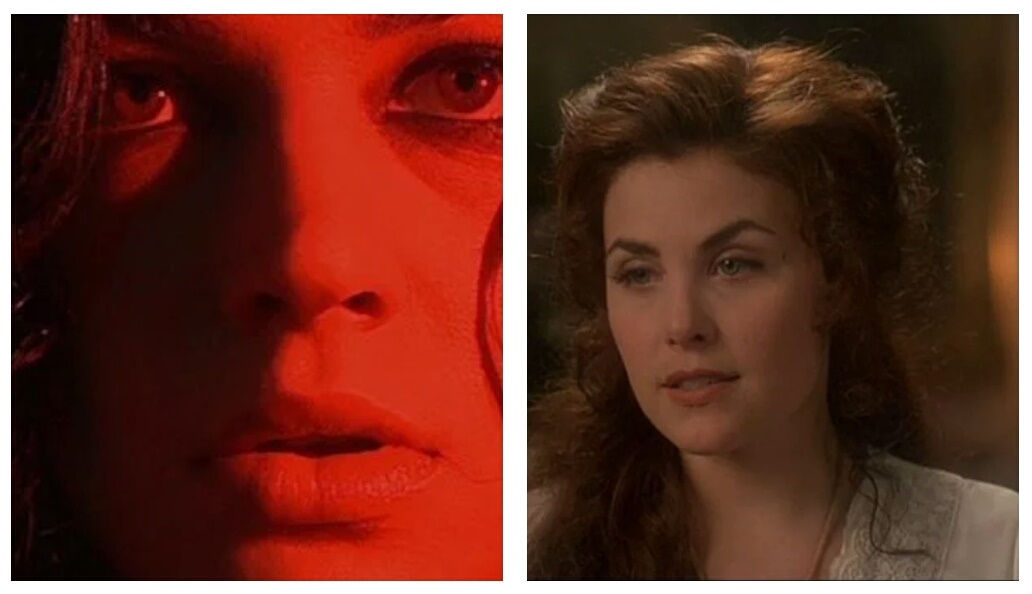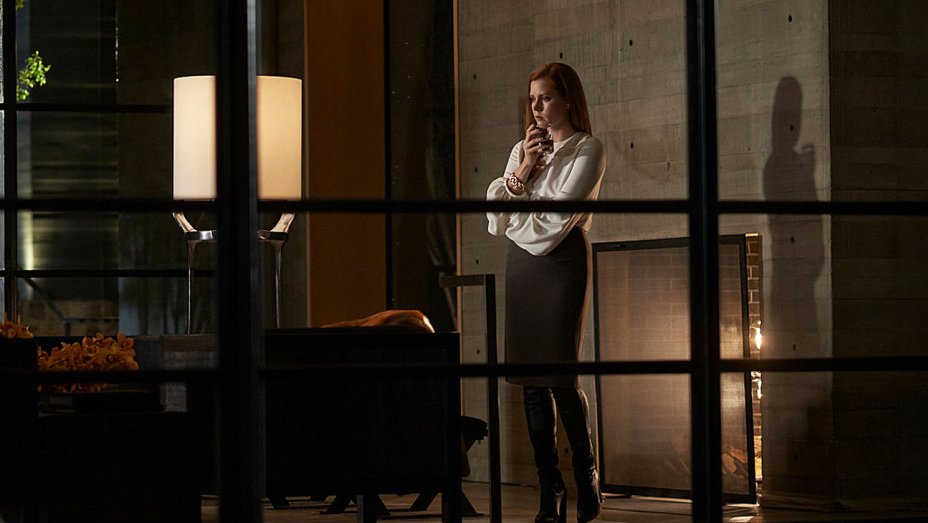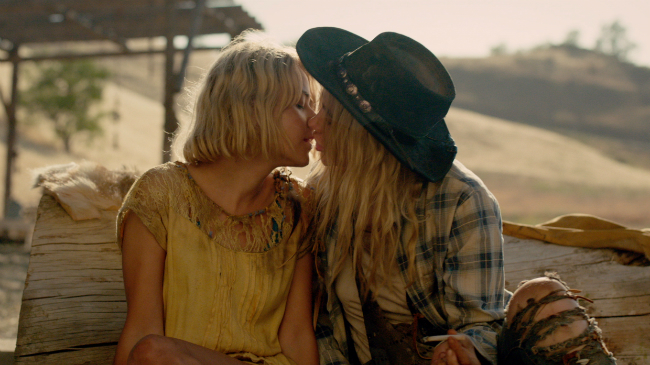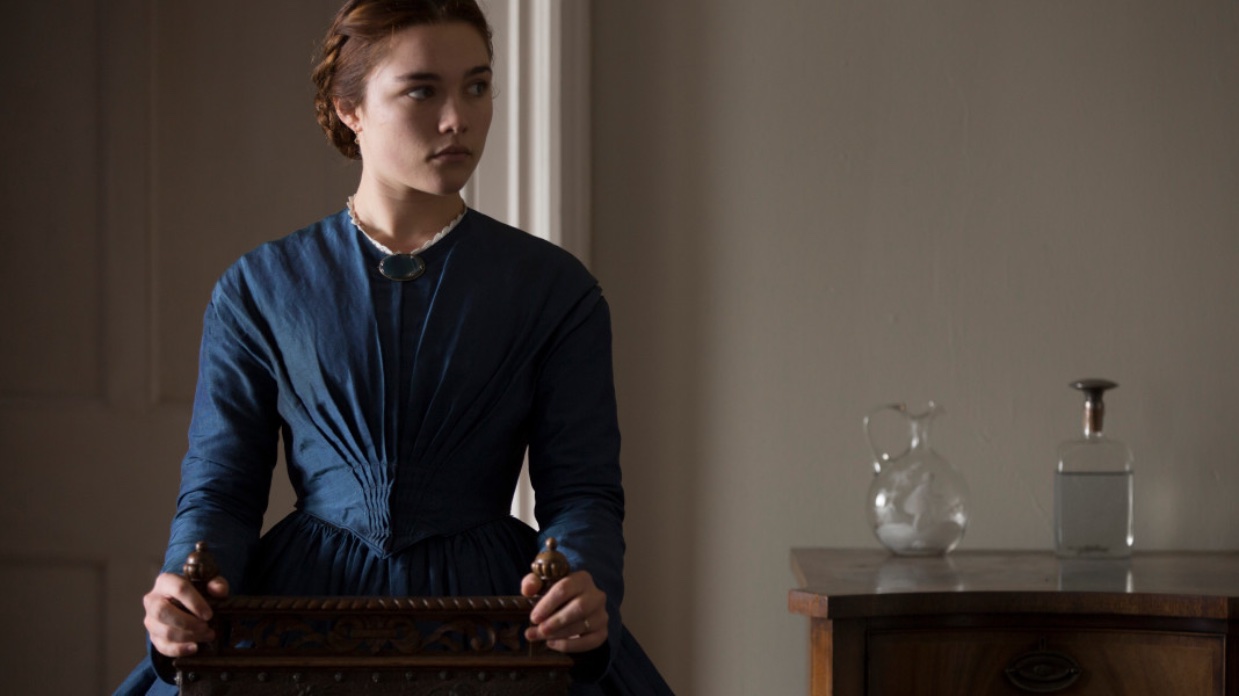This guest post written by Andy Herrera appears as part of our theme week on Bisexual Representation. | Spoilers ahead.
At first glance, Y Tu Mamá También looks and feels like a classic American sex comedy. You have two ostensibly straight young men desperate for sex who, when suddenly faced with the horrible predicament of not being able to have sex with their girlfriends while they are out of the country, befriend an attractive older women, lie to her about a beautiful beach destination, and both have sex with her. Even from this facile reading of the film, Y Tu Mamá También still invigorates that sometimes tired genre. Unlike American sex comedies, the sexual antics that our main characters, Tenoch (Diego Luna) and Julio (Gael García Bernal), get into are funny by virtue of how oversexed they themselves are and not the sex acts themselves, and the sexual humor is often at the expense of the men, not the women they have sex with.
The camerawork during the sex scenes often feels as lively as the people having sex on-screen as it moves in and out, creating a kinetic feel to each scene. When the movie is not explicitly about sex and sexuality, it’s a lovely travelogue of Mexico, shot beautifully by cinematographer Emmanuel Lubezki and interspersed with small visual reminders of political unrest juxtaposed with the natural beauty of the country. Director Alfonso Cuarón not only created a visually stunning sex comedy, however, he also created a complex character study that often points towards a bisexual subtext between our two leads.
Cuarón specifically cast Diego Luna and Gael Garcia Bernal as the leads, as they have been friends since childhood, and this shows in their natural chemistry on-screen. It’s clear why these two characters are friends and how they compliment each other. Going along with the film’s visual political commentary, there is also classism prevalent in the relationship between Tenoch and Julio. Tenoch’s father works for the Mexican government and Julio’s family is leftist and middle class, already setting up clear political and class conflict between the two boys that they nonetheless have managed to ignore in their friendship. As with other issues laid dormant in their relationship, Tenoch’s classism only comes out during a shouting match late in the film, as he calls Julio “a hillbilly.” The woman they go on a road trip with, Luisa (Maribel Verdú), proves to be the catalyst in unearthing the many repressed issues within their relationship, whether political or sexual.
The trope of an older woman teaching young men about life and love became ridiculous pretty much after Weird Science and it’s strange here too, yet is justified in retrospect at the end of the film, when Tenoch informs Julio that Luisa died a month after the trip and that she knew she had cancer the entire time. While Julio and Tenoch go on that journey with her, just for the virtue of being around an attractive woman that may have sex with them, Luisa went on that journey to find peace and truth within her life and impart wisdom on to someone, anyone, as her entire family is deceased and her husband repeatedly cheated on her. Luisa ultimately succeeds in finding truth for herself and for Julio and Tenoch, but for them the truth permanently fractures their relationship.
At the beginning of their journey, as Julio and Tenoch get to know Luisa, Julio states that “truth is cool but unattainable… the truth is totally amazing but you can never reach it.” Their trip to the beach allows Julio and Tenoch to come close to unearthing deep sexual truths about themselves, but his words become a self-fulfilling prophecy as they never reach the truth. At the beginning of the film, Julio and Tenoch start out as brash and sexually pompous (despite both of them admitting they’ve only had sex with their current girlfriends) young men. Out of a need for sexual intimacy with men she trusts more than her cheating husband, Luisa has sex with both of them and sexual dysfunctions are revealed: Julio reaches climax too quickly; Tenoch has a habit of saying “Mama” when he reaches his own climax. These idiosyncrasies are pointed out to them by Luisa, exemplifying their sexual immaturity and inexperience. It’s soon revealed that both Julio and Tenoch have slept with each other’s girlfriends in a scenario that’s first presented as dramatic and potentially friendship ending, but then is reframed as comedic as more of their sexual dalliances are revealed in farcical fashion. Their friendship remains intact.
As Julio and Tenoch come to a head in their argument over who had sex with whose girlfriend, Luisa becomes angry and leaves, exclaiming, “What [they] really want to do is fuck each other!” This statement, while humorous within the scene, gains weight when read in context with scenes before and after this one. Earlier in the film, Julio and Tenoch play around naked while showering, masturbate together, and even note a picture of a penis together. They remark that they never see a friend anymore since he came out of the closet, but are nonetheless accepting of him, despite their heavy usage of homophobic slurs throughout the film.
After they reconcile, Julio, Tenoch, and Luisa all have sex while intoxicated, which leads to Julio and Tenoch passionately kissing. The revelatory aspect of this threesome scene is that Tenoch and Julio’s kiss isn’t played for gay panic humor as it typically would be in other sex comedies, but rather as tender, loving, and a natural growth of their sexualities. There’s never a doubt that they’re attracted to women, but this scene confirms they are also definitely attracted to each other as more than friends (even Diego Luna can’t stop thinking about it). Luisa, once again, is the catalyst that leads them to this truth, it’s up to them whether or not they accept it.
Due to society’s (and their own ingrained) heteronormativity, Julio and Tenoch do not accept this truth, however. The morning after their tryst, they choose to go home immediately, with Luisa staying behind voluntarily. The narrator states that their girlfriends later broke up with them, they found new women to date, and they eventually stopped seeing each other. Julio and Tenoch only meet once again a year later, to discuss Luisa’s fate, before never meeting again. Luisa finds peace in nature and with her true self, and while she pushed Julio and Tenoch towards some harsh truths, they ultimately rejected them.
Y Tu Mamá También points out the elastic, freeing nature of femininity compared to the toxic, fragile nature of masculinity. Over the course of the film, Luisa only becomes a month or so older and finds truth, or at the very least solace for herself, while Julio and Tenoch go from brash young adults to estranged, closed-off adult men, refusing to come to terms with their bisexuality. The children are Mexico’s (and every country’s) future but even they cannot survive in an oppressive society without obscuring some fundamental truth about who they are.
Andy Herrera was born in New York, raised in Florida, and is now back in New York again. He was raised on TV shows and movies and now all he does is write about them.
